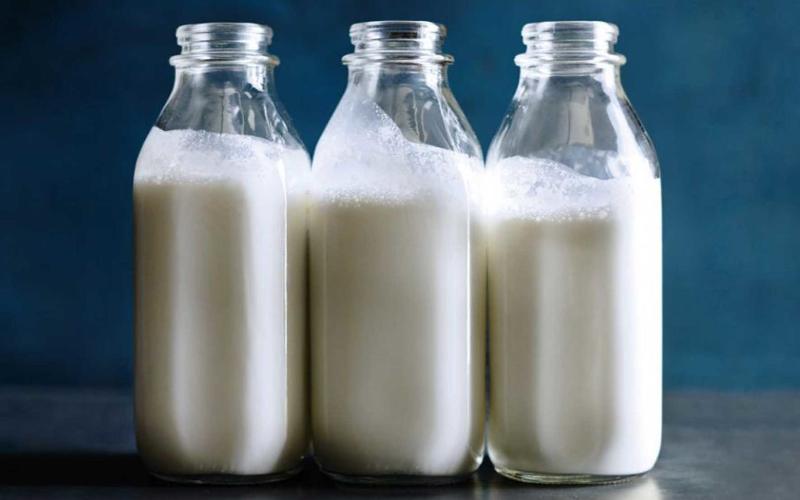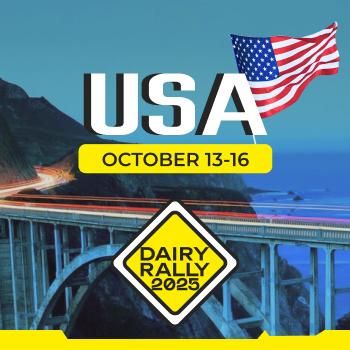Rabobank Report Indicates Sluggish Dairy Market Recovery Amid Variable Demand
Sourse: The DairyNews
A recent analysis by Rabobank presents a tempered forecast for the global dairy market, revealing that the upswing in dairy prices seen in late 2023 and early 2024 was driven primarily by restocking activities at reduced prices, rather than a strong increase in consumer demand.
According to the report, the market's price recovery is expected to be slower than initially predicted, particularly as China exhibits a decreasing dependency on dairy imports. Nonetheless, the long-term outlook for the market remains cautiously optimistic.
Challenges in Milk Prices and Supply Amid Modest Demand
As the second quarter of 2024 unfolds, the anticipated gradual rise in global milk prices has been challenged by subdued global demand coupled with a significant increase in domestic milk production in China, resulting in fewer imports. This scenario suggests that dairy prices may face further delays in achieving a full recovery.
While China has upgraded its milk production forecasts for 2024, other major dairy-producing areas such as the US, South America, New Zealand, and Europe are experiencing challenges. These regions have seen reductions in dairy herds due to low profitability, and adverse weather conditions have adversely affected milk output.
Consumer Sentiment and Purchasing Caution Impact Demand
Andrés Padilla, a Senior Dairy Analyst at Rabobank, notes that recovery in demand is showing mixed signals, with consumer purchasing power being squeezed. "Despite low unemployment rates in major markets, consumer sentiment is weaker than expected. Persistent inflation and high interest rates continue to burden consumer spending and debt management, particularly as credit becomes crucial following years of cumulative inflation," Padilla explains.
In China, subdued consumer confidence and a weak job market have led to more conservative consumption patterns, despite a brief spike during the Lunar New Year festivities. Additionally, dairy buyers, who had previously taken advantage of lower prices to replenish stocks, are now approaching the market with increased caution, anticipating a seasonal rise in Northern Hemisphere milk production and thus adopting a slower purchasing pace at current prices.
Varied Performance Across Dairy Exports
While China’s overall net dairy imports are projected to decline by 8% in 2024, the demand landscape for different dairy products varies. A rise in domestic production coupled with faltering demand is reducing China’s dairy imports, particularly of skim milk powder. Conversely, cheese and butter exports are expected to maintain strong performance, buoyed by consistent demand in various regions.
Positive Outlook for Dairy Farmers with Lower Feed Costs
Despite broader market challenges, dairy farmers have a silver lining with the reduction in feed costs. Commodity prices for essentials like soybeans and corn are anticipated to stabilize or even decline in the latter half of 2024. Padilla notes that "affordable feed prices should boost farmgate milk prices, which have already begun to climb since late 2023. This could potentially encourage a modest uptick in production towards the end of the year, improving farmer margins and providing a somewhat more optimistic scenario for the dairy sector."
Challenges in Milk Prices and Supply Amid Modest Demand
As the second quarter of 2024 unfolds, the anticipated gradual rise in global milk prices has been challenged by subdued global demand coupled with a significant increase in domestic milk production in China, resulting in fewer imports. This scenario suggests that dairy prices may face further delays in achieving a full recovery.
While China has upgraded its milk production forecasts for 2024, other major dairy-producing areas such as the US, South America, New Zealand, and Europe are experiencing challenges. These regions have seen reductions in dairy herds due to low profitability, and adverse weather conditions have adversely affected milk output.
Consumer Sentiment and Purchasing Caution Impact Demand
Andrés Padilla, a Senior Dairy Analyst at Rabobank, notes that recovery in demand is showing mixed signals, with consumer purchasing power being squeezed. "Despite low unemployment rates in major markets, consumer sentiment is weaker than expected. Persistent inflation and high interest rates continue to burden consumer spending and debt management, particularly as credit becomes crucial following years of cumulative inflation," Padilla explains.
In China, subdued consumer confidence and a weak job market have led to more conservative consumption patterns, despite a brief spike during the Lunar New Year festivities. Additionally, dairy buyers, who had previously taken advantage of lower prices to replenish stocks, are now approaching the market with increased caution, anticipating a seasonal rise in Northern Hemisphere milk production and thus adopting a slower purchasing pace at current prices.
Varied Performance Across Dairy Exports
While China’s overall net dairy imports are projected to decline by 8% in 2024, the demand landscape for different dairy products varies. A rise in domestic production coupled with faltering demand is reducing China’s dairy imports, particularly of skim milk powder. Conversely, cheese and butter exports are expected to maintain strong performance, buoyed by consistent demand in various regions.
Positive Outlook for Dairy Farmers with Lower Feed Costs
Despite broader market challenges, dairy farmers have a silver lining with the reduction in feed costs. Commodity prices for essentials like soybeans and corn are anticipated to stabilize or even decline in the latter half of 2024. Padilla notes that "affordable feed prices should boost farmgate milk prices, which have already begun to climb since late 2023. This could potentially encourage a modest uptick in production towards the end of the year, improving farmer margins and providing a somewhat more optimistic scenario for the dairy sector."
Key News of the Week














